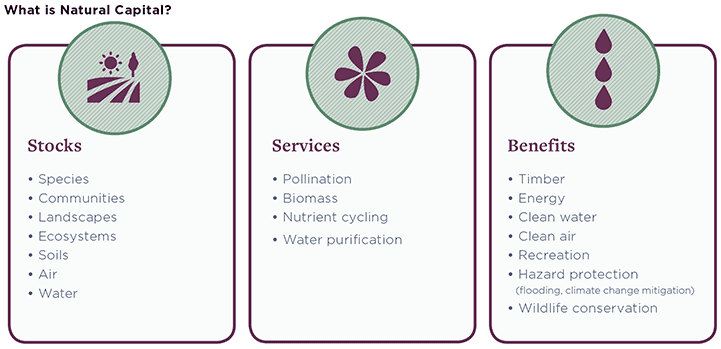outlook
Natural assets on estates, such as woodland, can become revenue opportunities
.png)
Natural assets on estates, such as woodland, can become revenue opportunities
Natural Capital is the stock of the world all around us – earth, air and water and all the components that are linked with them: trees, minerals and peat bogs, to name but a few. The term has been in use since the early 1970s but has only recently gained widespread prominence.
Ecosystem services are the services that Natural Capital can deliver, the sequestration of carbon by trees, the filtering of water by rocks and the flood prevention provided by flood plains. Services also include the provision of food and fibre, and the pollination of crops, and cultural, aesthetic and wellbeing values.
Natural Capital is synonymous with sustainability and the Natural Capital approach feeds directly into the UN’s Sustainable Development Goals which set a framework for society to meet the needs of the current generation, without compromising the needs of future generations.
The New Environmental Land Management Scheme (NELMS) is underpinned by Natural Capital principles i.e. managing natural resources.

What are the opportunities?
Payments, capital and/or an annuity for ecosystem services are made to the ‘manager’ of the Natural Capital to provide the ecosystem service. Examples of biodiversity offsetting include paying farmers to actively manage their landscape to mitigate flood risk or watercourse management.
Many services are currently provided without charge but as the ‘polluter pays’ principle becomes more established so does the ability for ‘offsetting’ and the development of an associated market. These might include:
Our Estate Benchmarking Survey clearly shows that woodland on rural estates is under-utilised and over the past five years has, on average, barely broken even and on many estates is a significant cost. We believe that woodland along with other natural assets on estates may be an income opportunity worth exploring and should be investigated as part of the estate’s current strategy planning (see Time to review).
A good place to start, especially for marginal land, might be to consider the Countryside Stewardship Woodland Creation Grant scheme where applications can now be made all year round, using a streamlined application process. The scheme provides up to £6,800 per hectare for tree planting.
Those who are able to deliver the benefits desired or offset the losses from elsewhere are in a prime position. We are working on this subject – please contact our team for more information (see Glossary and footnotes).
3 other article(s) in this publication